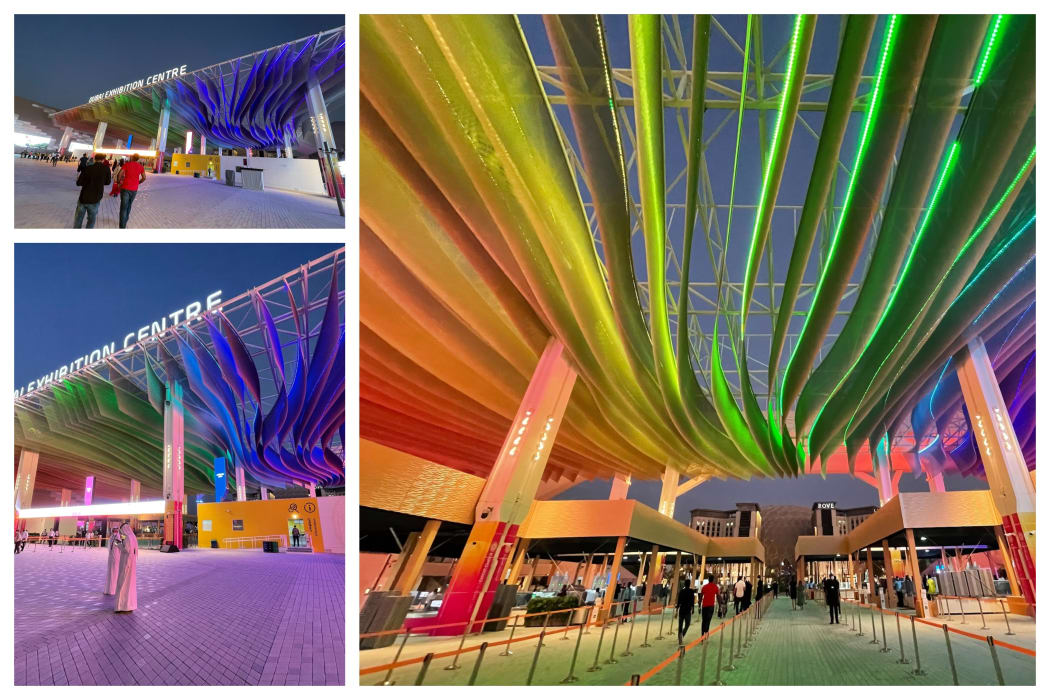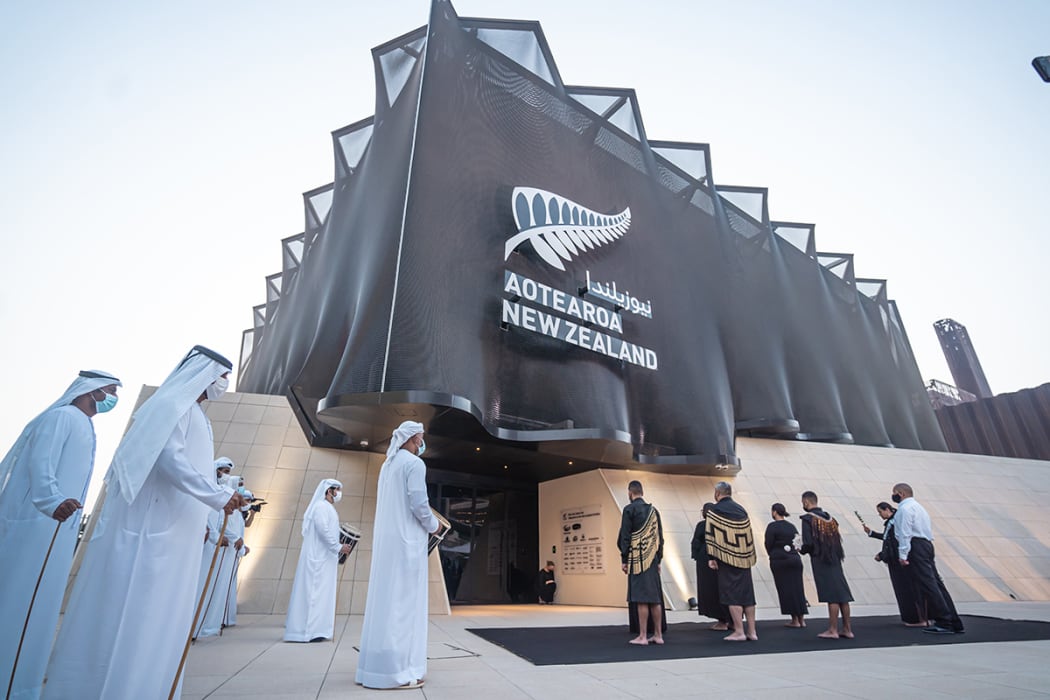Kayne Horsham's innovative architectural product Kaynemaile is one of the striking centrepieces of Expo 2020's entrance canopy in Dubai.
It not only forms Expo 2020's arrivals’ shade canopy, but also adorns the New Zealand Pavilion there.
During his time as the artistic director of creatures, armour and weapons at Wētā Workshop for the Lord of the Rings trilogy - Kaynemaile made its debut.
The patented product is made in Petone but in demand globally.
Horsham says Kaynemaile is a modernised version of chainmail designed for architecture purposes as well as protection and artistic purposes.
The Dubai World Trade Centre showed an interest in the product.
"They had been looking at several other materials coming out of Europe and they'd undertaken field testing in the desert and this testing had identified that these materials weren't robust enough for the application," Horsham tells Kathryn Ryan.
"They knew we had the performance capabilty and we had time-proven examples out there in the commercial space.
"So they came to us and we collaborated on the design of the big shade canopy that sits over the entire main entrance to the world expo, it's around 12,000 square metres - the material itself that was supplied for that."
It was of particular interest because of its solar reduction, which was crucial considering the people that would queue outside, he says.
"It was important to create an environment as shaded from this desert sun as possible.
"I don't think unless you've been there many people quite understand how hot 50 degrees is, when the environment you're in might be 50 degrees but the radiant energy coming off the buildings might be 80 or 90.
"You can burn your hand when you touch a steel element in those conditions, so that's where they were very interested in the thermal properties."

Photo: Kayne Horsham
Traditional materials, like those made of metal, heat up during the day and emit that heat over the afternoon and evening back into the building and surrounding environment, he says.
"It's a phenomenon that's been given a name now called urban heat island effect.
"Our product is an insulating material with significant airflow through the material which acts as a cooling agent, so by creating that physical barrier between the outside world and the building with a membrane type design, it allows us to reduce the amount of solar energy entering the building during the day and then at night, it has a chance to cool back down."
After conducting tests with GNS, they believe it offers 70 percent shade protection.
While the chainmail appears to move in the wind, like in the design for a carpark building in Ohio, its been produced in a way to not make noise, he says.
"It's also very malleable, unlike a lot of traditional materials that have a rigidity ... and it's what makes chainmail unique compared to all materials.
"We're using that in a creative artistic way ... we're bringing life to these buildings through allowing that movement to occur or embracing the idea that we can deform the shape of it and make more of a three-dimensional finish, which is a good way to try and soften the hard and urban environment."

Photo: Supplied / NZ at Expo 2020
Horsham has also been interested in the environmental benefits of high-grade engineered polycarbonate used to create Kaynemaile.
"Polycarbon rose above all the other material options out there - I explored ceramics, aluminium, alloys and I kept coming back to this material," he says.
"People probably know it best as things like bulletproof windows or aircraft windows are made of the same material.
"We don't contaminate the material with any materials that can't be removed at the end of its life. So effectively we could receive back a project we delivered say 20 years ago, we could take that material to the original producer and they would reproduce an original version material from that."
Some traditional materials use eight or 10 times more energy just for the first cycle of production compared with polycarbon, he says.
Raw material demand even for recycled polycarbon is very high because of its value, he says.
"We have those relationships in place with the original manufacturers that can take this material back to a virgin state.
"So whilst people talk recycling, we actually go one step further and that is we want to bring it back to the original state because recycling only works one or two times and then eventually it all turns up in a furnace or a landfill."

